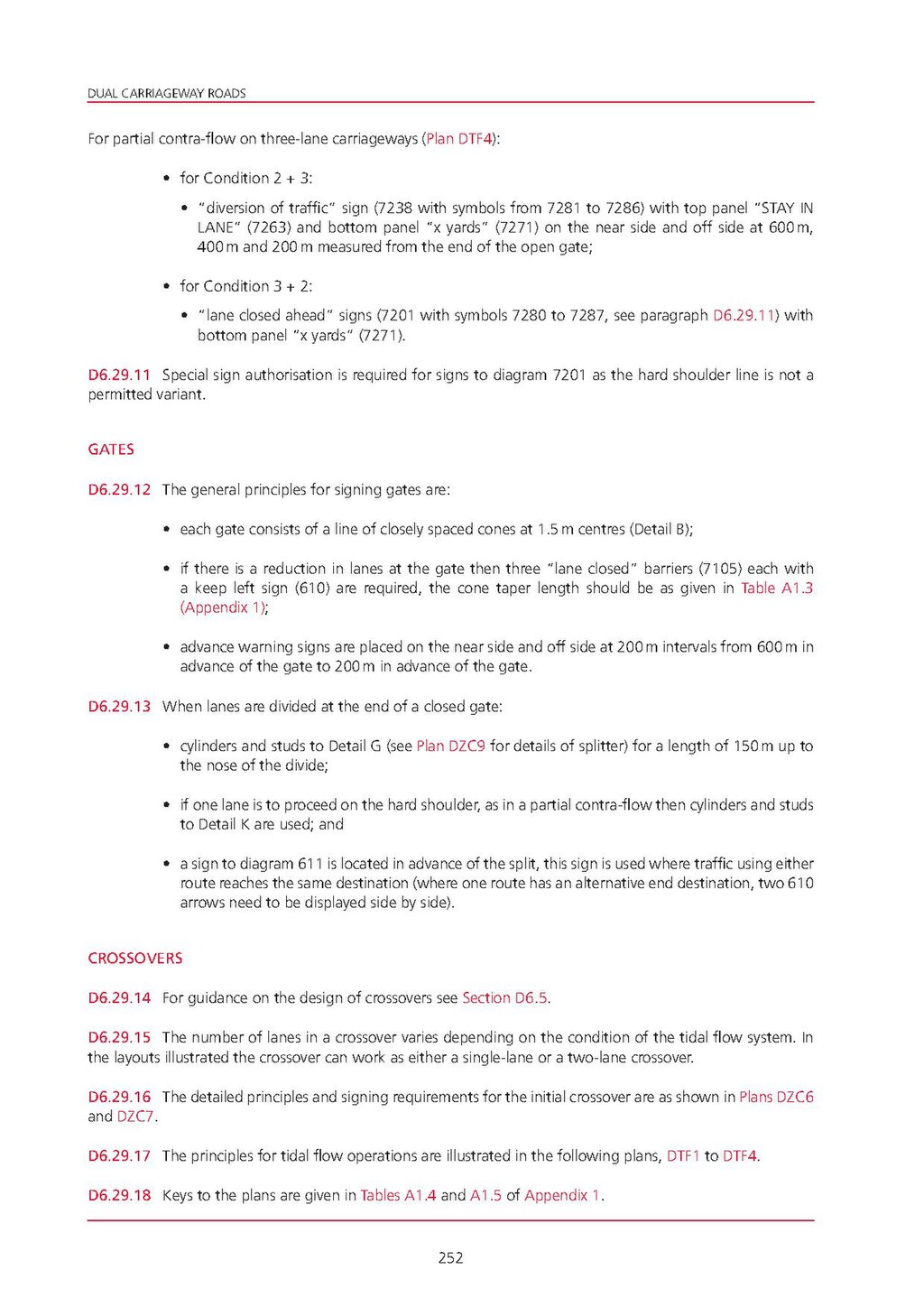For partial contra-flow on three-lane carriageways (Plan DTF4):
- for Condition 2 + 3:
- "diversion of traffic" sign (7238 with symbols from 7281 to 7286) with top panel "STAY IN LANE" (7263) and bottom panel "x yards" (7271) on the near side and off side at 600 m, 400m and 200m measured from the end of the open gate;
- for Condition 3 + 2:
- "lane closed ahead" signs (7201 with symbols 7280 to 7287, see paragraph D6.29.11) with bottom panel "x yards" (7271).
D6.29.11 Special sign authorisation is required for signs to diagram 7201 as the hard shoulder line is not a permitted variant.
GATES
D6.29.12 The general principles for signing gates are:
- each gate consists of a line of closely spaced cones at 1.5 m centres (Detail B);
- if there is a reduction in lanes at the gate then three "lane closed" barriers (7105) each with a keep left sign (610) are required, the cone taper length should be as given in Table A1.3 (Appendix 1);
- advance warning signs are placed on the near side and off side at 200m intervals from 600m in advance of the gate to 200 m in advance of the gate.
D6.29.13 When lanes are divided at the end of a closed gate:
- cylinders and studs to Detail G (see Plan DZC9 for details of splitter) for a length of 150m up to the nose of the divide;
- if one lane is to proceed on the hard shoulder, as in a partial contra-flow then cylinders and studs to Detail K are used; and
- a sign to diagram 611 is located in advance of the split, this sign is used where traffic using either route reaches the same destination (where one route has an alternative end destination, two 610 arrows need to be displayed side by side).
CROSSOVERS
D6.29.14 For guidance on the design of crossovers see Section D6.5.
D6.29.15 The number of lanes in a crossover varies depending on the condition of the tidal flow system. In the layouts illustrated the crossover can work as either a single-lane or a two-lane crossover.
D6.29.16 The detailed principles and signing requirements for the initial crossover are as shown in Plans DZC6 and DZC7.
D6.29.17 The principles for tidal flow operations are illustrated in the following plans, DTF1 to DTF4.
D6.29.18 Keys to the plans are given in Tables A1.4 and A1.5 of Appendix 1.
252
